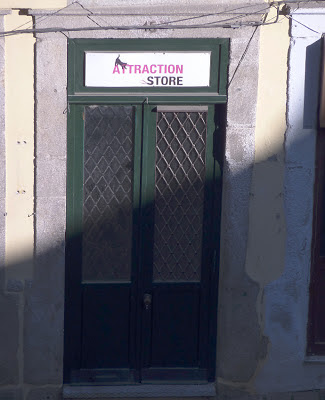Our first stop was to visit the Romanesque Porto Cathedral, whose origins stretch back to the 12th Century.
One of the interior photos that I can identify is this one, a bas-relief of Jesus with St. John the Baptist.
The cathedral today reflects a mix of elements added between the 14th and 18th Centuries.
Here is the main altar.
And another chapel. Don't worry, I won't post a photo of every single one.
This connected room has been redone in the baroque style.
The cathedral has an adjoining cloister.
The cloister walls have some fantastic examples of azulejo, painted tin-glazed ceramic tiles. It has been a Portugese art form since at least the 15th Century, adopted from the Moors.
Our guide pointed out this protected Madonna statue, supposedly one of the few in the world that shows her pregnancy.
Stepping outside, I took this picture across to the tower of the Clérigos Church -- an excellent navigational landmark for the tourist.
Just a couple of blocks from the church is the Dom Luís I bridge, built in the 1880s, whose top deck now supports a metro line and a pedestrian walkway. It was a fabulous way to soak up some sunshine and admire the view up and down the river Douro.
Our view looking north from the bridge:
Below there was river traffic, mostly replicas of the rabelo boats that in decades and centuries past carried people and, more importantly, port wine. Now, in modern times, they are primarily a tourist business.
Both banks of the river are occupied by berths.
Zooming in on the above picture, we can see several types of boat, including a sculling shell near the top (click to enlarge).
There was time enough for a few more photographs when Joan and I returned to the cathedral. This statue is of Vimara Peres, declared the first Count of Portugal in the 9th Century.
Another cityscape photo, this time zoomed in.
A residential building with azulejos tiles.
This modest door did not appear to be associated with anything meaningful, though the name was curious. But now I'm thinking it is merely the back door to a reputable store.
Then it was time to reboard our buses. The Episcopal Palace is adjacent to the Porto Cathedral, where the buses waited.
And while in Porto one must take a picture of the statue of Henry the Navigator, born in Porto in 1394 and considered the patron saint of the Portugese Age of Discovery.
Then it was time to cross the Douro and visit the Sandeman cellars of Porto. The Sandeman wine and port business was started in 1790 by the Scotsman George Sandeman, and in 1811 he purchased the cellar that we were touring today.
Our guide's costume is that of the trademark character, the "the Don," which was created for Sandeman in 1928.
Port wine is a wine in which the fermentation is halted early by the addition of distilled grape spirits, known as aguardiente. This leaves some sugars in the wine, and boosts its alcohol content to between 18%-20%. The port wine is then stored and aged, often in wooden barrels. Lots of barrels.
Each with chalk markings ...
A larger vat.
After the tour, we were treated to a port-wine tasting. Just as with unfortified wines, there are many styles: ruby, tawny, white, and special categories. Here are our tastings, which were ruby and white.
There was time to stroll along the pedestrian walk along the river before our buses arrived. There were gifts and trinkets being sold from tables and small stalls,
but my attention remained with the river.

A heron calmly studied us from a barrel.
Then we returned to our ship for lunch. The path to and from the Explorer, at the Leixões docks, led through an older wooden terminal that is unlocked only when a cruise ship has arrived. This old train and its diminutive passenger car caught my eye.
I paused and took a photo of the plate on the side, and thereby stepped into a small adventure on the Web.
In researching relevant links for this post, as I do for most posts, I googled for "Societe Anonyme des Forges Usines & Fonderies de Haine St. Pierre," and the Wikipedia entry for this company (defunct after the Second World War) did not have this locomotive in its list of surviving engines. I had never attempted to edit a Widipedia entry before, nor submit photos, but I felt compelled to contribute even if the article was written in French. Eventually I worked my way through the thicket of Wikipedia editing commands, options, and icons. Now you will see our Porto/Matosinhos engine on the page.
After lunch we sailed away for Lisbon. The beachfront at Matosinhos includes a sculpture called She Changes, which looked interesting enough from offshore, a bit like a radio astronomy dish,
but it also serves as the center of a traffic roundabout. Our buses had driven by it in the morning.
View Larger Map
As we sailed south that afternoon we were treated to talks by Lisa Abend, Time magazine's Spain correspondent, and by Catherine Karnow, a National Geographic photographer. There are few empty hours on a Lindblad Expedition unless you choose to carve them out for yourself.
That evening was the Captain's farewell cocktail party and dinner, and packing. Luggage had to be outside the cabin door by 6:00 AM, so packing all the stuff that had sprung out of our bags during the last two weeks could not be put off any longer. Each bag needed a colored tag according to your itinerary: one color for early transfer to the airport, another color for not-as-early transfer to the airport, and finally colors for city tour plus one of two hotel drop-offs, which was our plan. But that's for the next post.



































No comments:
Post a Comment
Comments may not appear immediately as they are moderated by the author to eliminate spam. Please, no commercial links!